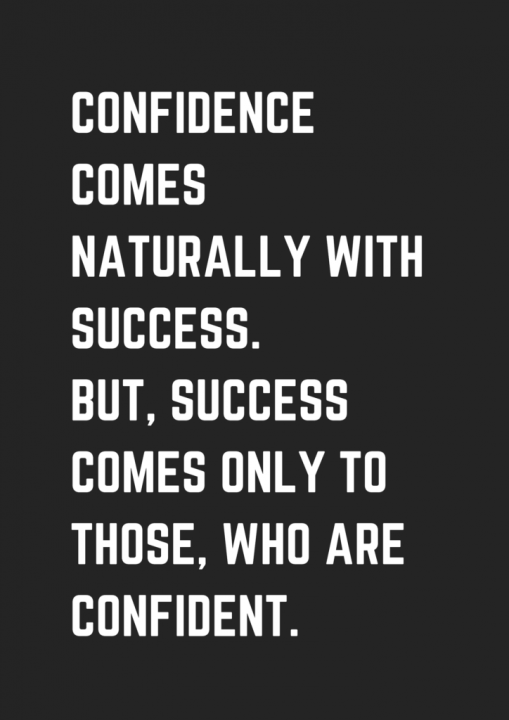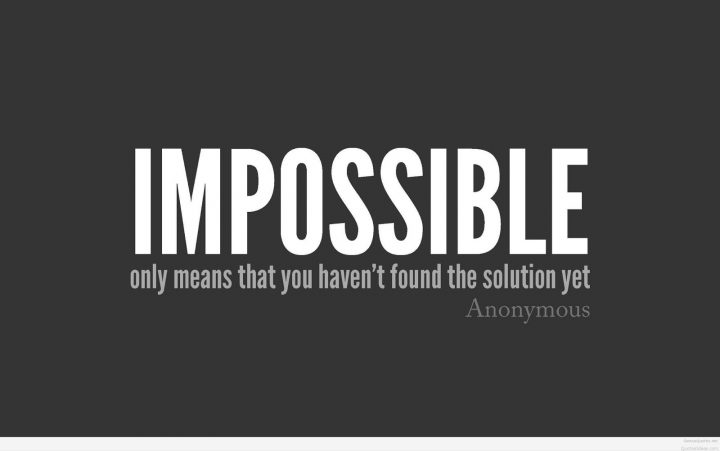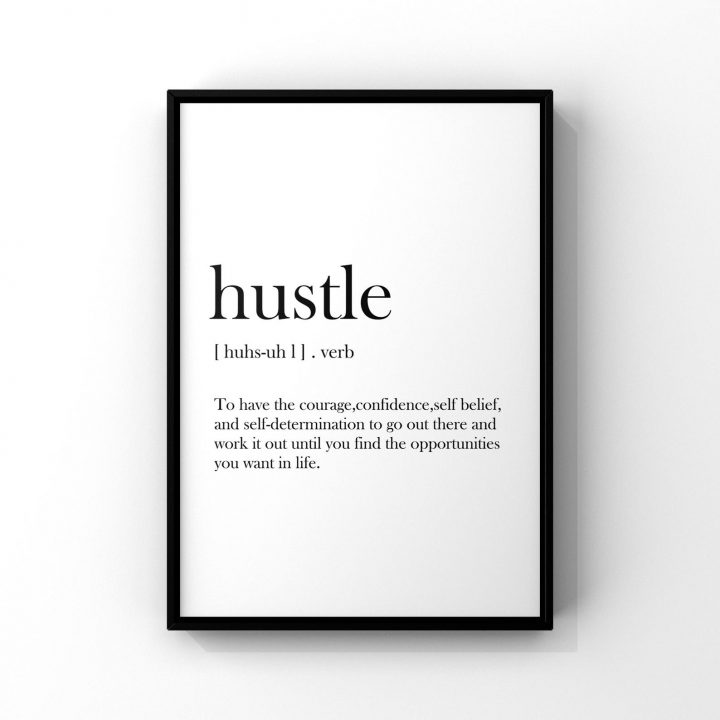9 SUMMERTIME COCKTAILS
Boats, bikinis and ice cold beverages, its summertime baby!
Our menu of functional blends serve many purposes. From workout recovery, to immunity support, to an afternoon brain boost, the functions are endless. But one of our favorite functions? They make excellent adult beverage mixers. Read on to see our top 9 favorite summer drink cocktails for you to enjoy this summer.
1 - WHISKEY SOUR: Getting straight to the point with this first cocktail. Keep it simple!
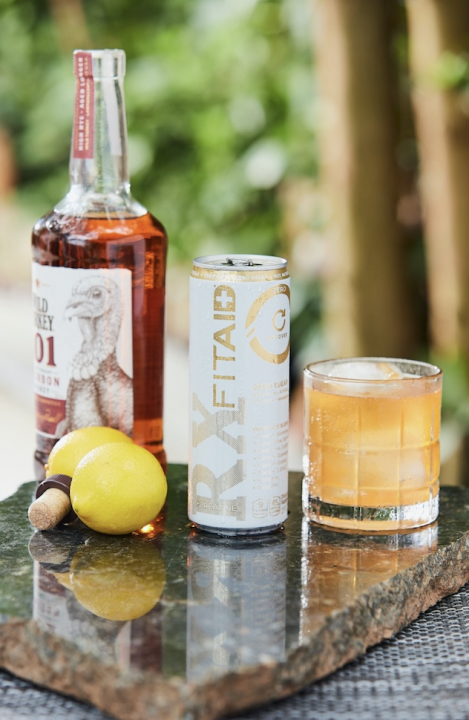
1/2 can of FITAID RX or RX Zero
1 - 2 oz. Whiskey
Ice
Squeeze of Lemon
2 - GO-MOSA: For all you early risers out there, throw in some IMMUNITYAID GO to your next boozy brunch cocktail.
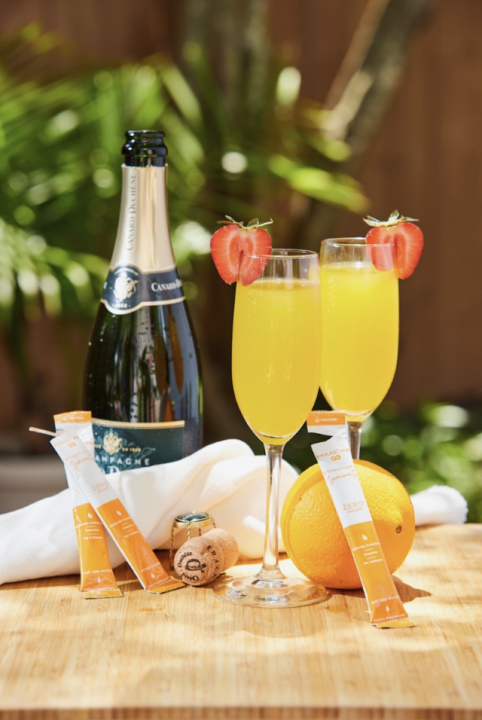
1 packet of IMMUNITYAID GO
Champagne
Berries for garnish
3 - FIT FIZZ: This one makes you just wanna go “ahhh”
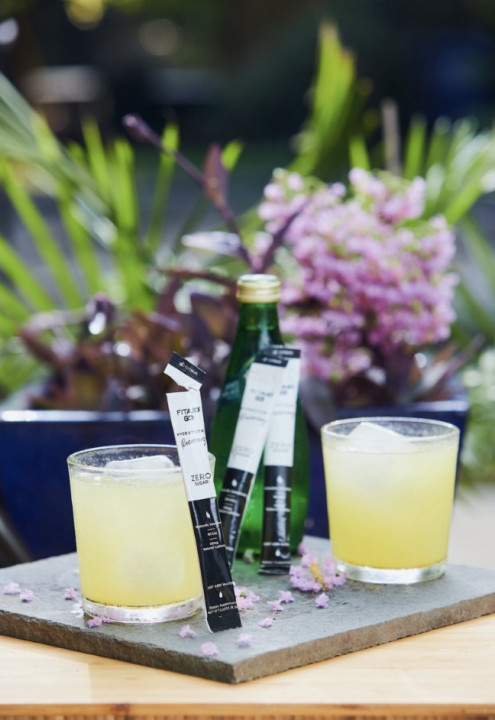
1 Packet of FITAID GO!
Seltzer water
1 1/2 oz. Vodka
4 - BLUEBERRY LIMEAID: Basically synonymous with "Summertime Friday Afternoon"
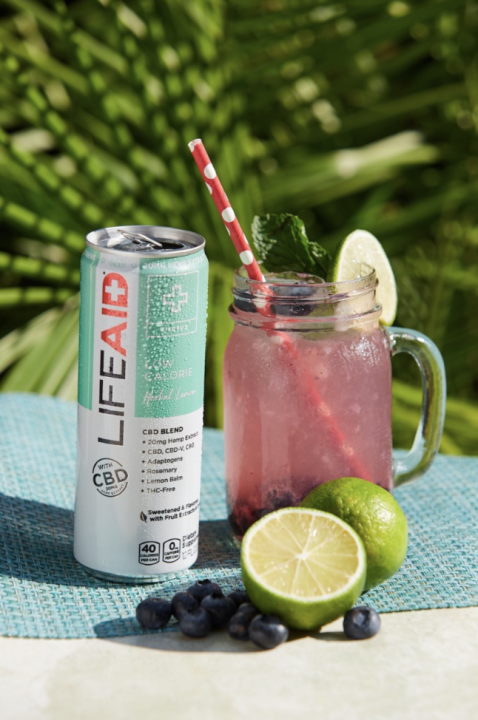
1/2 can of LIFEAID HEMP
1 1/2 oz. Vodka
1 tbsp freshly squeezed lime juice
1/4 cup Blueberries
Lime wheel
Sprig of fresh mint
5 - KETORITA: Looking for a low calorie take on a classic? We've got you covered.
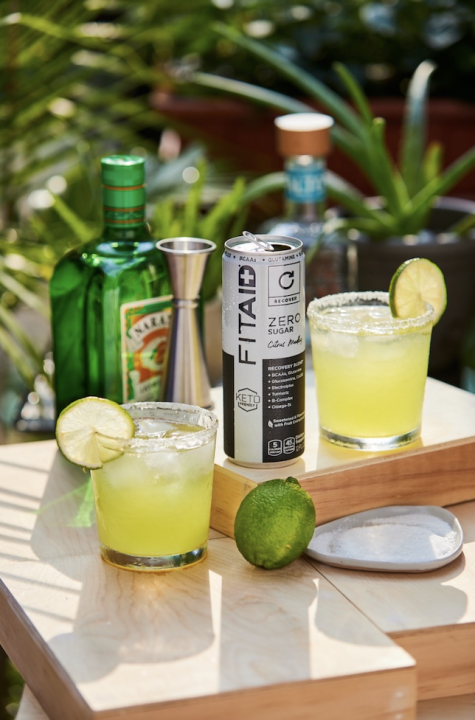
½ can of FITAID ZERO
1-2 ounces of premium Tequila
½ ounce of Cointreau
Squeeze of fresh lime
Ice (on the rocks/blended)
Coarse salt (optional)
6 - PARTYAID DAIQUIRI: Be the life of the party at your next summer BBQ, bonus points for a mini umbrella!
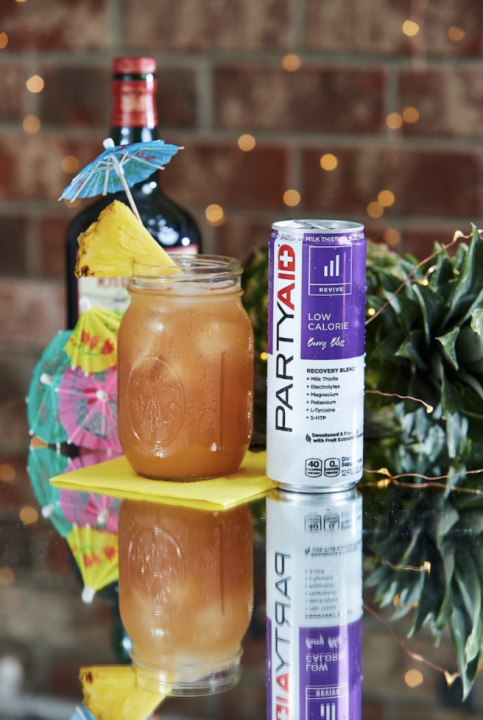
1/2 can of PARTYAID
1/2 oz Grand marnier/Naranja
1 1/2 oz Rum, dark
1 oz Pineapple juice
Garnish: mini umbrella, pineapple slice
7 - SOUR SUNRISE: Oh you fancy huh?

1 oz. IMMUNITYAID
1 1/2 oz. Whiskey
1 1/4 oz. fresh lemon juice
1/2 oz. simple syrup
1/2 oz. grenadine
8 - CREAMSICLE: We think this drink needs to be added to the Ice Cream Truck menu.
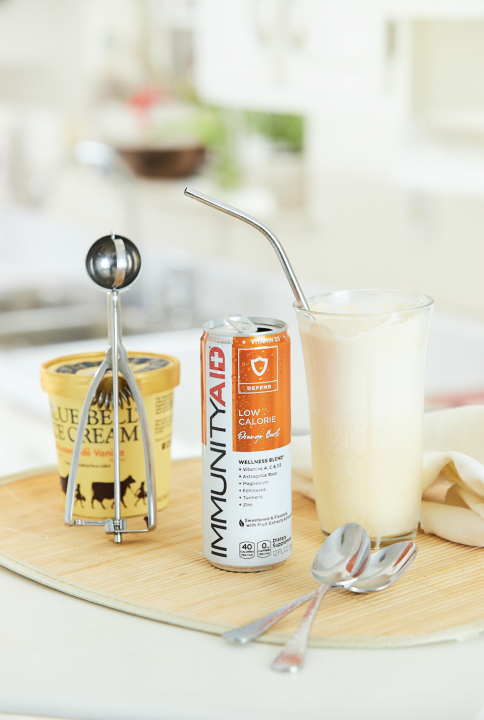
1 can of IMMUNITYAID
1 - 1 ½ oz vodka
Ice Cream
9 - CHILL PILL: Refreshing, calming, delicious. Need we say more?
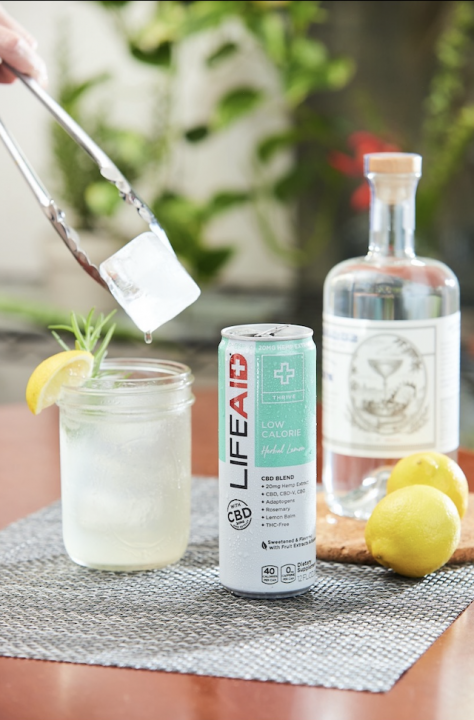
1 can of LIFEAID Hemp
1 oz. Vodka (or Gin!)
Garnish: Lemon wedge and rosemary
Do you have a favorite summer cocktail involving one of our LIFEAID blends? Leave it in the comments below!
Happy drinking!
9 SUMMERTIME COCKTAILS Boats, bikinis and ice cold beverages, its summertime baby! Our menu of functional blends serve many purposes. From workout recovery, to immunity support, to an afternoon brain boost, the functions are endless. But one of our favorite functions? They make excellent adult beverage mixers. Read on to see our top 9 favorite […]
Photo courtesy of cnn.com
As a mama of twin one year olds, a business owner, and a fitness lover, adequate sleep is an absolute CRITICAL component in my routine. But easier said than done, right? With two teething kiddos, late nights getting caught up on work, and just trying to fit all my daily “to do’s” in before bed, I have often caught my sleep taking a major hit.
The last handful of months I have shifted my focus to creating a pre-bed routine that will support the best sleep possible, even if it is for less hours than this mama would like!
Whether you’re a parent of littles yourself, or just simply need some better sleep hygiene, I encourage you to try some of the suggestions in this list and see what they can do for you and your sleep + recovery!
- Get outside during daylight hours.
Especially this last year - so many of us have spent more time indoors than ever. Getting outside and into the sunshine helps your body keep its circadian rhythm in check. Bonus points if this outdoor time involves physical activity! Which leads me to my next point…
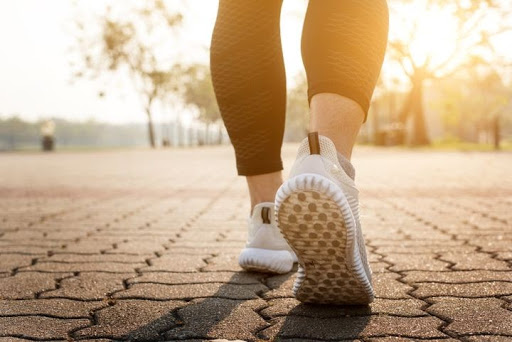
Photo courtesy of huffpost.com
2. Get a workout in!
I am sure I am preaching to the choir with this one, but getting in physical exercise during the day helps improve sleep and reduces symptoms of insomnia. Just make sure you get your workout in at a time that supports your sleep schedule - for some, working out too late in the day may make sleep more difficult, as exercise stimulates the body.
3. Create a consistent routine
Parents of little ones know that creating a consistent bedtime routine helps their kids get to sleep faster and easier. This is true for adults too! Start a pre-bedtime routine to signal to your brain that it’s time to wind down for the day. This can include numerous things, but here is what my personal routine includes!
- Having a consistent bed time / wake time (yes, even on weekends!).
- Turn TV / bright lights off an hour before bed.
- No liquids (with the exception of #5, which I will get to in a minute) within 2 hours of bed.
- Write out a To-Do List for the next day, so it’s not circling around in my head as I try to fall asleep.
- Lay out workout clothes for the following morning.
- Take a hot shower.
- Do my skincare routine, brush teeth.
- Read for 10-20 minutes.
- Set thermostat to cool, completely black out the room, and turn on sound machine.

Photo courtesy of johnryanbydesign.co.uk
4. Block out blue light in the evening.
Y’all knew this one was coming. Blue light loves to ruin our sleep. Much to my first point - our brains have a natural clock that is based off of light/darkness. Blue light throws our circadian rhythm for a loop, and too much exposure before bed time can trick your brain into thinking it is “awake time”.
I know firsthand how difficult it is to cut out ALL blue light in the evenings (this is my chance to catch up on work after the kids have gone to bed - and work includes phones and a computer!), BUT there are things you can do to help. Wearing blue light glasses, installing apps that block blue light on your phone/computer, etc are great ways to lessen the impact of blue light in the evenings.
5. Use a sleep aiding supplement - like DREAMAID GO!
I started using the new DREAMAID GO packets as soon as they were released, and I have been hooked ever since. I have consistently been falling asleep faster, staying asleep, and just overall getting better sleep (proven by my FitBit sleep scores each morning!), and I couldn’t be happier with these results. I have been getting my first EVER “90”s with my FitBit sleep score, and I know that is no coincidence.
Best of all, it tastes great and I actually look forward to drinking it. I drink it about 30 minutes before bed (once I am done with my shower) and usually mix it with about 4oz warm water, although it is great cold too! It tastes like an herby orange tea - so delicious!
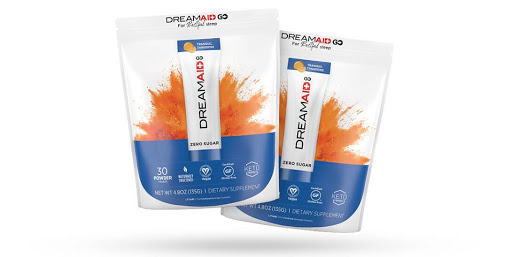
What other sleep suggestions would you add to this list? What works personally for you? I’d love for you to share in the comments below!
- Molly Tilove @mollyeledge
Photo courtesy of cnn.com As a mama of twin one year olds, a business owner, and a fitness lover, adequate sleep is an absolute CRITICAL component in my routine. But easier said than done, right? With two teething kiddos, late nights getting caught up on work, and just trying to fit all my daily […]
Sleep is on our minds and we wanted answers to all of our burning questions about getting a restful night’s sleep. We sat down with US Army Neuroscientist and US Army Warrior Fit athlete Dr. Allison Brager to learn more about sleep and how to get more efficient with our sleep game. Here’s what she had to say.
What is the most common sleep challenge?
The most common sleep challenge is developing a consistent, sleep-promoting routine. Sleep is directly tied to our behavior and actions. If we prepare our brains for sleep (winding down/putting away phones/not watching Netflix, etc.) at least an hour before bedtime, we put ourselves in the best position possible to enter the deepest & most restorative stages of sleep. It takes commitment & discipline but the benefits of restorative sleep on next-day performance is worth every bit of the sacrifice.
What are some vitamins/herbs/supplements that can support sleep?
Herbal remedies/supplements for sleep have been around for centuries. The ancient Chinese have been reported to use valerian root. A recent supplement promoting restorative sleep of interest is magnesium due to its mediation in how the central nervous system communicates. Tart cherry root (a natural source of melatonin) has also been shown to promote sleep in one clinical study. More research needs to be done on the benefits of select herbs/supplements on actual sleep processes but there are challenges due to the fact that the supplement industry is not regulated by the FDA. However, we shall prevail and it is industry leaders like LIFEAID who can implement a change in bureaucracy.
Why is your circadian rhythm so important?
The circadian rhythm is literally everything. The master circadian clock in the brain has input and output from virtually every tissue in the body. There is a self-sustaining circadian clock in every tissue of the body. When I was a fellow, I discovered one of these clocks in the skeletal muscle and how it regulates sleep (Ehlen, Brager et al. 2017). Because of these unique biological pathways, this is why adhering to a strict sleep routine, training, and even eating schedule are so incredibly important. A change in routine can rapidly shift the clock and how we sleep & perform.
What’s the difference between REM and Non-REM Sleep?
NREM sleep is for physical recovery & REM sleep for cognitive recovery, but both are equally as important and make up what is known as deep & restorative sleep. We cycle through NREM-REM in 90 min cycles across the night. The 90 min cycle is more saturated with NREM sleep in the first half of the night and more REM sleep in the second half of night. This distribution is actually tied to the circadian rhythm of core body temperature.
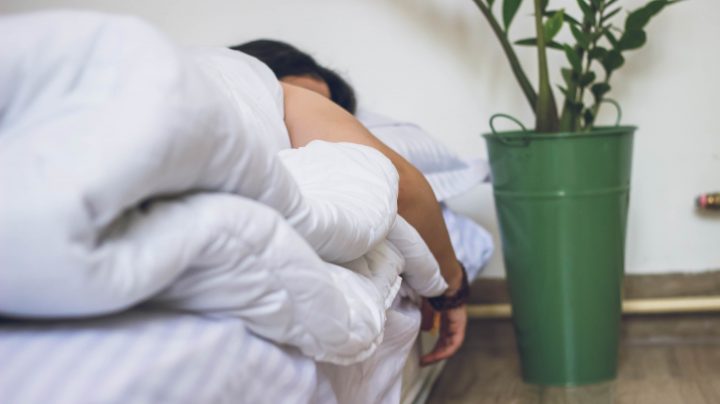
What is the best sleep environment?
The best sleep environment is dark (pitch black!), cool (< 68 degrees F), and noise free (with the exception of a white noise machine which research supports to help coax the brain into sleep). It's that simple. This one percent change goes a long way.
Is there such thing as too much sleep?
From the perspective of someone who is in a career field known for massive sleep deprivation/sleep debt (i.e., first responder & military), no. Sleep banking prior to bouts of sleep deprivation can actually help stabilize performance during bouts of sleep deprivation. For the average person though, too much sleep can be a sign of an underlying health condition. But the important point here is that we never ever want to be in any situation where we are accumulating sleep debt.
Can daytime naps affect sleep?
Napping is a wonderful thing. Napping can help to repay sleep debt. Napping can also lead to an immediate benefit/boost in cognitive & athletic performance. Nap timing and amount matters. Keeping a nap < 30 min in the afternoon ensures that it will not disrupt sleep at night.
Is it better to sleep on your back, stomach or side?
Sleeping position absolutely matters. Sleeping in the fetal position is absolutely best. Sleeping on one's back can make one more prone to sleep apnea-like episodes (due to relaxing of the tongue/throat muscles) and sleeping on one's stomach requires more effort to breath (due to dead weight). There are now forming pillows (i.e., Rooster Recovery) available to ensure one sleeps on their side.
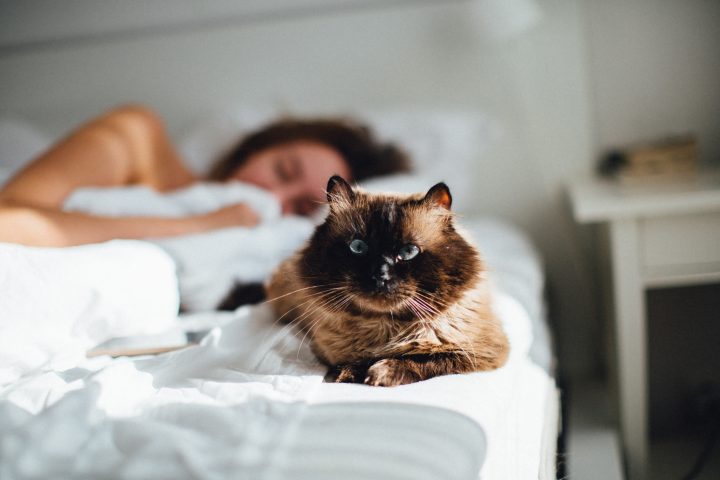
How does food affect your sleep quality?
This is challenging for athletes but one should avoid food high on the glycemic index prior to bed (e.g., bananas, candy). A higher glycemic index can spike blood glucose preventing one from entering the deepest stages of restorative sleep.
When should you workout for the best night’s sleep?
Exercise elevates core body temperature. Lower core body temperatures lead to hitting the deepest & more restorative stages of sleep. As such, aim to finish working out 2 -3 hours before bedtime to allow core body temperature to return to baseline. This of course applies to high-intensity exercise. Taking a walking or moderate exercise (< 40% rate of perceived full exertion) to relax & wind before bed won't have the same impact.
Why do we dream?
Dreaming is part of REM sleep. It happens due to high activation of the visual cortex & hippocampus (center of memories) among other brain areas. REM sleep can be best described as an awake brain in a paralyzed body. REM sleep helps to consolidate learned information for future recall.
Why can we remember some of our dreams and forget others?
This largely has to do with where one wakes up in the sleep cycle. The 90 min sleep cycle goes from NREM-REM-wake (very briefly). One is more likely to remember their dream if they wake up (and stay awake for a brief time) after fully completing a NREM-REM sleep cycle. This is why we tend to remember our last dream before we fully wake up in the morning.
Why do we sleep talk/walk?
Sleep talking and walking happen during NREM sleep not REM sleep. It is a myth that it happens during REM sleep. Basically, the brain gets a mixed signal to "move" when it shouldn't and that is why people who sleep talk & walk engage in automatic behaviors like talking & walking. Sleep talking & walking are not healthy and a sign for sleep deprivation or something more clinically concerning.
What do different sleep positions say about you?
Hahah, I'm not sure but the fetal position is best! And also, being the big spoon and/or little spoon may release other "feel good" chemicals of love & attachment like oxytocin and vasopressin.
What questions do YOU have about sleep? Let us know in the comments!
Sleep is on our minds and we wanted answers to all of our burning questions about getting a restful night’s sleep. We sat down with US Army Neuroscientist and US Army Warrior Fit athlete Dr. Allison Brager to learn more about sleep and how to get more efficient with our sleep game. Here’s what she […]
We've all been there: capping off the weekend with friends and family or celebrating a win on Super Bowl Sunday, only to wake up with a terrible hangover to start a long work week. What you might not know is that alcohol consumption interferes with natural brain activity during sleep — to say nothing of those late-night emergency trips to the bathroom! In short, a hangover's effect on the brain is essentially identical to that of sleep deprivation, disrupting the hormones that regulate our biological clocks.
What are some of the most common symptoms of a hangover?
Hangovers range in severity based on degree of overindulgence, with the most common symptoms being fairly debilitating. These include migraines, nausea, diarrhea and extreme fatigue. More severe cases can manifest in sustained elevation of systolic blood pressure, shaking, clamminess and overproducing sweat glands.
It goes without saying that the obvious best course of treatment for a hangover is hydration and plenty of bed rest. However, it's worth noting that social events and holidays like birthdays, bachelor parties and St. Patrick's Day don't always fall on weekends! In this post, let's look at how LIFEAID beverages, hemp-derived CBD products and common health supplements may help you get ready for a productive day at work — with or without a killer hangover.
PARTYAID Recovery Blend to Reduce Fatigue & Stomach Issues
LIFEAID’s PARTYAID beverage is a non-caffeinated, 40 calorie recovery blend for revitalizing the system with much-needed electrolytes. It comes in a refreshing berry bliss flavor; a piquantly perfect balance to perk up the taste buds and energize the senses.
PARTYAID contains 5-hydroxytryptophan (5-HTP), a natural amino acid used in the production of serotonin which functions as an important chemical messenger and neurotransmitter. Low serotonin levels lead to fatigue and sleep dysfunction as well as rapid weight gain, depression and other physiological disorders. 5-HTP may be an effective hangover remedy in itself because of its reported ability to promote healthy sleep cycles and reduce fatigue by normalizing serotonin levels in the body.
PARTYAID also contains milk thistle, a well-established home remedy for nausea, indigestion, gas and upset stomachs. For decades, milk thistle has been a household go-to for hangovers — making it a natural addition to a weekday recovery blend.
Cannabidiol (CBD) for Increased Focus and Relief from Headaches & Nausea
CBD and other cannabinoids produce their effects through interactive modulation of the endocannabinoid system (ECS), a network of cannabinoid receptors in the body that influence the production and throughput of hormones like dopamine and norepinephrine. This ability to regulate the flow of hormones into the nervous system is the foundation of medical research into CBD as a possible natural alternative to lab-synthesized spasmolytics, painkillers and anxiolytic drugs.
As of this writing, there is a significant amount of scientific literature exploring the viability of CBD supplementation not only for improving overall focus, but in managing symptoms of dementia as well. Studies highlighting CBD's analgesic potential are further supported by millions of anecdotal testimonies in the form of product reviews across social media and e-retail sites.
While more research is required before CBD's viability as a novel alternative to pharmaceutical drugs becomes a fact of life, it certainly can't hurt to try an all-natural, user-backed hangover remedy to reduce headaches and nausea while increasing focus and concentration — all with virtually no risk of side effects.
And if you’re not quite ready to dive into the expensive world of CBD oil yet, LIFEAID Hemp is a great alternative. It has 20mg of organic broad-spectrum hemp extract with active cannabinoids (and it tastes much better than CBD oil too!).
A Cup of Tea Using Common & Complementary Health Supplements
If you happen to be a believer in natural medicine, you'd be surprised how many of the common supplements available at your local health and wellness shops effectively reduce symptoms of a bad hangover. Let's look at three of the best examples below:
Red Ginseng has been shown in crossover studies to potentially relieve the severity of hangover symptoms by "significantly lowering" blood alcohol levels with regular supplementation. With other well-known benefits like increased energy, strengthened immune system and decreased stress, red ginseng is a handy supplement for much more than the odd episode of overindulgence.
Borage oil is derived from starflower seeds, and may be effective in reducing hangover symptoms, as shown in a home-based open label study with 113 participants. In the study, 88% of subjects reported significant relief from typical hangover symptoms like headaches and stomach discomfort — with a notable exception being palpitations in overweight individuals.
Ginger is considered in several cultures as a tried and true remedy against the spells of nausea, vomiting or diarrhea associated with everything from severe fevers to pregnancy and food poisoning. So ginger may be just as effective in ameliorating these symptoms when brought about by a bad hangover, and greatly enhances numerous Asian recipes when not in use as homemade medicine. Ginger can be an acquired taste, if you’re not ready to fully dive in, you can also crack open an ice-cold can of LIFEAID which contains ginger extract in its proprietary blend.
While these ingredients can tackle symptoms of so-called "weekday sickness" fairly well by themselves, there's no reason you can't combine two or more of the above with tea leaves and honey to make a potent home remedy against particularly debilitating hangovers. So if you can find all four of the above, be sure to stock up for emergencies.
-Paul Lewin
Paul Lewin is a hemp industry enthusiast and craft beer lover, currently hiding out in Ho Chi Minh City, Vietnam. He's written for The GrowthOp and many other large publications.
We’ve all been there: capping off the weekend with friends and family or celebrating a win on Super Bowl Sunday, only to wake up with a terrible hangover to start a long work week. What you might not know is that alcohol consumption interferes with natural brain activity during sleep — to say nothing of […]
Mom Life: Keeping Active (and Sane!) During a Pandemic
2020 and 2021 have been some of the most trying years for everyone, but I think most parents can especially relate to how life-rocking this last year has been. Whether you’ve navigated pregnancy/postpartum in a way you completely didn’t expect, had to add “teacher” to your resume as your children took on virtual learning, or navigated job changes or “working from home” with kiddos around… this last year has pushed us and challenged us in ways we were never expecting.
As a parent, taking time for yourself is as critical as ever these days. One of my favorite phrases that always rings through my head, “You can’t pour from an empty cup.” Carving out time in your day to take care of yourself--physically, mentally, and emotionally--is what gives us the ability to be the best we can be for our babies.
For me, one of the best ways I can care for myself is to stay active. Here are my best tips that have helped me get back into a fitness routine as I navigated postpartum life during a pandemic:
Find an activity that you LOVE and look forward to.
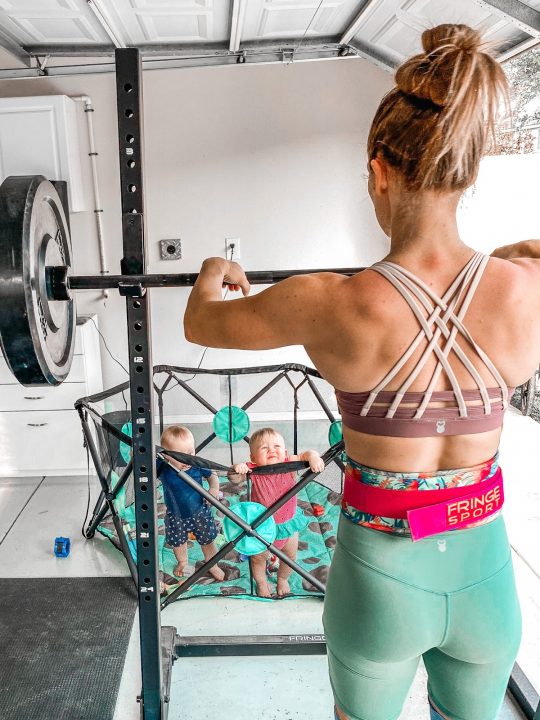
This has been the key to my fitness journey, both pre-pregnancy and postpartum. Finding a sport or activity that I truly enjoy is what keeps me going, even on my “Ugh, I don’t feel like working out” days. Whether that’s CrossFit, walking, riding a bike, weightlifting, or taking a kickboxing class, find an activity that fires you up.
Schedule it in + hold yourself accountable.
I treat my workouts like a meeting--they are scheduled into my calendar. I wouldn’t miss an important meeting, and for me, these workouts are an important meeting with myself. Of course, some days it is unavoidable and life happens, but overall, I try and treat my 30 min workout like the priority it is!
Create a routine that works with your kids’ schedule.
I have twins that are a year old and since they were born, my workout schedule has changed as they’ve grown and changed. It’s great to be adaptable! I used to bring their swings out to our garage gym for them to sit in while I worked out. As they got older, I started working out during their naps or after they went to bed at night. Now, our routine is them having an afternoon snack (full kiddos + more content kiddos!) and then we all go out to the garage gym together. They hang out in their giant playpen and watch/imitate us as we workout and we all love it!
Get more steps in.
One of my favorite habits that I started up a few months ago is going for a walk or jog every morning with the kids. Getting fresh air in the morning sets us all up for a better day, the babes love sightseeing, and it helps me get movement in early, even on days where I’m not sure I’ll get in a true “workout”. It’s also a great time for me to call a family member and catch up, or listen to a podcast; so it’s definitely a win-win!

I hope some of these tips can help you reach your activity goals during these crazy times. What suggestions would you add to this list? I’d love to hear them--feel free to leave them in the comments below!
Happy Fitness-ing, mamas!
Molly Tilove
Mom Life: Keeping Active (and Sane!) During a Pandemic 2020 and 2021 have been some of the most trying years for everyone, but I think most parents can especially relate to how life-rocking this last year has been. Whether you’ve navigated pregnancy/postpartum in a way you completely didn’t expect, had to add “teacher” to your […]
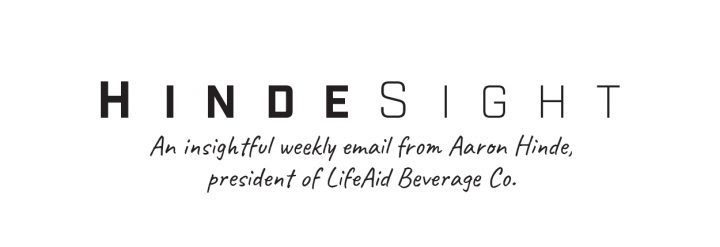
CrossFit Open Wrap Up with MisFit Athletics
On this bonus episode of the MisFit Athletics podcast, the “Goon Squad” recaps the first phase of the CrossFit season, the CrossFit Open and look ahead to Quarterfinals which kick off this week.
There Are No Rules to Healthy Eating
As CrossFit athletes, we learn that the foundation of health is nutrition. When the methodology first was introduced, the Zone Diet was the prescription. That has changed over time and while I am a proponent of healthy eating (hence, the origin of LIFEAID), there is a lot to consider when it comes to diets versus lifestyle with nutrition.
"You don’t learn from following the rules. You learn by doing, and by falling over."
—Richard Branson
How to Say 'I Don't Know' with Confidence
When Orion and I started LIFEAID, there was a lot that we didn’t know. We had never started a beverage brand before! If we tried to build the company without acknowledging those blind spots and seeking the answers to those questions, there is no way we would have made it to the 10 year mark as a brand.
Screw Business as Usual
One of the things I love about Richard Branson is that he doesn’t care what anyone thinks. He leads his businesses with conviction and is celebrated for it (as he should be). In this book, Branson argues that people, communities and the planet are perhaps more important than focusing on profit in business.

HindeSight | No. 59
CrossFit Open Wrap Up with MisFit Athletics On this bonus episode of the MisFit Athletics podcast, the “Goon Squad” recaps the first phase of the CrossFit season, the CrossFit Open and look ahead to Quarterfinals which kick off this week. Listen now. There Are No Rules to Healthy Eating As CrossFit athletes, we […]
Managing Time and Setting Expectations with Marcus Filly
It may feel like a lot of things aren’t within our control right now, however, we absolutely have control over how we spend our time. Former competitive CrossFit Athlete turned functional bodybuilding coach, Marcus Filly talks about his strategies in time management and how to set expectations on this episode of the Active Life podcast.
![]()
A Changing Gut Microbiome May Predict How Well You Age
In a new study in the Journal of Nature Medicine, the constantly changing and diversifying of your gut microbiome is a sign of healthy aging. How and what you eat plays a big role in this, because certain foods (mostly processed foods) can kill off some microbiomes. I talk about gut health a lot, specifically the negative effects of Sucralose to your gut microbiome which is why we do not use Sucralose in any of our products.
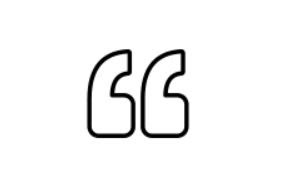
"A brand for a company is like a reputation for a person. You earn reputation by trying to do hard things well."
—Jeff Bezos
![]()
11 Lessons for Entrepreneurs From Jeff Bezos's Tremendous Success
At the core of Amazon’s success is it’s focus on delivering an excellent customer experience. As Jeff Bezos steps away from his CEO role at the company, Inc. lays out 11 lessons that all entrepreneurs can learn from him.
![]()
First, Break All the Rules
Ever since LIFEAID was started 10 years ago, we’ve leaned on some unconventional approaches to building the business and our employees. We have a talented team and it’s always been in our DNA to highlight their strengths and encourage them to always keep growing. This book is a product of a decade’s long management study from the Gallup Organization that debunks some myths and exposes methods of how to get the best out of your employees.
I Want to Build High-Performers

HindeSight | No. 58
Managing Time and Setting Expectations with Marcus Filly It may feel like a lot of things aren’t within our control right now, however, we absolutely have control over how we spend our time. Former competitive CrossFit Athlete turned functional bodybuilding coach, Marcus Filly talks about his strategies in time management and how to set expectations […]
![]()
Over the Wall with Rob LoCascio
Ron Aniello joins Rob LoCascio on Over the Wall from the studio in New Jersey for an inspiring conversation about how to surround yourself with talented people who can boost your creative process and set you off towards success. There’s tons of helpful knowledge in this one for anyone experiencing creative frustration, self-doubt, or issues answering the call of their own curiosity.
![]()
Unhealthy Foods Aren't Just Bad For You, They May Also Be Addictive
Orion and I started LIFEAID because we saw a trend in kids consuming high sugar, high caffeine beverages. We wanted to provide people with a healthier alternative without all of the junk. More and more we’re seeing people adopt healthier lifestyles, but as this article suggests, there are still strides to be made.

"Do the best you can in every task, no matter how unimportant it may seem at the time. No one learns more about a problem than the person at the bottom."
—Sandra Day O’Connor
![]()
What Business Leaders Can Learn From Tom Brady and Serena Williams
Every quarter we establish our goals as a company and individually, putting them into a vision statement that is shared weekly in present tense. This has been a big reason why we’ve been able to push LIFEAID forward for the last 10 years. Good to know that we’re in good company.
Think Again
In this book, Organizational Psychologist Adam Grant lays the groundwork of why it’s so important to always listen like you’re wrong. It allows us the opportunity to approach situations with a new perspective; especially those that we are closest to.
Are You Willing to Rethink and Unlearn?

-No. 57-
Over the Wall with Rob LoCascio Ron Aniello joins Rob LoCascio on Over the Wall from the studio in New Jersey for an inspiring conversation about how to surround yourself with talented people who can boost your creative process and set you off towards success. There’s tons of helpful knowledge in this one for anyone […]
Exercise Together!
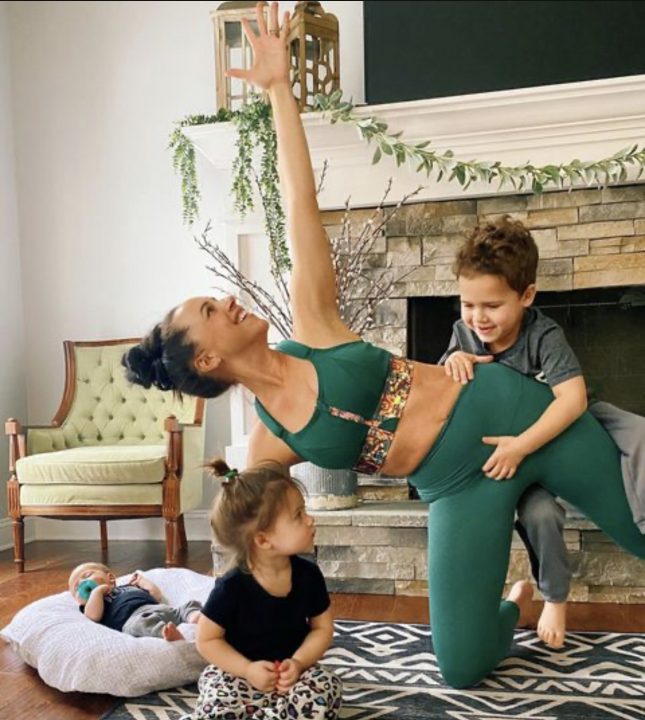
1.) Toddler Yoga Stretches/Salutations
2.) Hiking With Teens
3.) Running with Young Kids
Cover photo courtesy of @holliemooandmummytoo
Other photo courtesy of @randilynngreene
About the Author:
Georgia native Tiffany Ammerman is the thru-hiker and CrossFitter behind the travel blog The Goodish Traveler. She spends the majority of her time traveling, eating sushi and searching for hiking trails. When she's not blogging, Ammerman can be found training at CrossFit LaGrange and teaching art to kids.
Exercise Together! Daily movement can be a vital part of our daily routine. For some, it’s about remaining grounded and focused through following a program and spending time with yourself. For others, it can be about reaching fitness goals and maintaining a healthy lifestyle. Being a mom can sometimes feel like you have to put […]


![]()
![]()
Mindful Productivity: The Power of the Pivot
Feeling like you want to make a huge change in your life? Feel like something needs to change or that your energy levels are drastically different than they were a year ago? Maybe it's time for a pivot.
![]()
![]()
Don't Underestimate the Power of a Walk
Technology is a great tool especially in this day and age, but it also has an overwhelming ability to suck us in. I don’t know about you, but there have been days where I realize I haven’t gotten up from my desk all day and I can feel the difference. Especially now, I have gotten into the habit of taking some of my meetings while on a walk to get some movement.
![]()

"No matter the risks we take, we always consider the end to be too soon, even though in life, more than anything else, quality should be more important than quantity."
—Alex Honnold
![]()
![]()
Is Two Hours Outdoors the New 10,000 Steps?
With the cooler weather and government shutdowns across the country, getting outdoors and enjoying nature may not be as easy as it once was. In a 2019 study published in Nature’s Scientific Reports showed that participants who spent two hours or more in nature had a better chance of reporting better health and well-being than those who spent less than two hours outside.
![]()
![]()
The Art of Impossible
Bestselling author and peak performance expert Steven Kotler decodes the secrets of those elite performers—athletes, artists, scientists, CEOs and more—who have changed our definition of the possible, teaching us how we too can stretch far beyond our capabilities, making impossible dreams much more attainable for all of us.
![]()
HindeSight | No. 56
Mindful Productivity: The Power of the Pivot Feeling like you want to make a huge change in your life? Feel like something needs to change or that your energy levels are drastically different than they were a year ago? Maybe it’s time for a pivot. Listen now. Don’t Underestimate the Power of a Walk Technology […]
